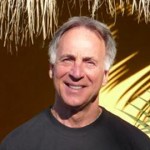Science and Mind-Body Medicine: There is no refuting the science behind the mind-body connection
Jim Massey, ND
Aristotle stated, “soul and body react sympathetically upon one another.”1 This connection between the mind, body, and soul or spirit has been debated throughout the ages. The history of this debate has been highlighted and dictated by the great scientists and scholars of those times, whose theories and writings became the accepted belief systems. Many, if not all, of the theories and speculations about the mind-body connection, as well as other significant questions of that time in history, were predicated on the scientific authorities who were greatly influenced and given their authority by the Catholic church or heads of state. My objective is to share and explain how science has evolved and transpired from Aristotle’s lifetime. The mind-body medicine paradigm is now based on the latest scientific advancements of the past 100 years. These scientific breakthroughs during this period have presented us with an immense opportunity to utilize and further integrate the mind-body medicine model into the forefront of the healing modalities we can now offer our patients.
Traditional Western medicine had been dominated by Descartes’ reductionism theory for the last 300 years. Rene Descartes (1569-1650) was the first to introduce reductionism to Western thinking and philosophy.2 According to his view, the world can be regarded as a clockwork mechanism: to understand it, one needs only to investigate the parts and then reassemble each component to recreate the whole. The reductionism school of thought considered the mind as merely part of the body’s “clockwork mechanism.” Descartes saw two parts to man, mind, and body: res cognitans and res extensa. Although the body could affect the mind, no influence was possible from the mind to the body. Descartes’ work was expanded by Isacc Newton (1643-1727) and ultimately culminated in the Principia Mathematica in 1687—one of the most influential science books ever written, in which Newton further advanced the idea of a “clockwork universe.”3 This status quo of scientific understanding remained in force until the mid-20th century. Since the time of Newton, classical mechanics was regarded as the foundation of scientific research.
This new age of science was recognized to have begun around the time of Copernicus (1473-1543), who was one of the first to hypothesize the theory that the Sun was, in fact, the center of our universe, and not the Earth. Of course, Copernicus did not publish his thesis until after his death, due to his fear of imprisonment (or possible death) by the Catholic church,4 which frowned on such radical challenges to belief. This new age of science was based on empirical research, as well as the theories from the great minds of those times. The scholars, physicists, and teachers who flourished during the latter stages of this “new” age of science were finally able to perform their research without the fear of extreme reprisal from those in power who were often highly resistant to such change.
What was considered the main event that precipitated the shift from the reductionism/classical mechanics and the Newtonian way of thinking? Enter Albert Einstein (1879-1955), who in 1905 founded the “Theory of Special Relativity,”5 which proved that Newton’s law of physics were not only incomplete, but wrong. Newton’s laws were nearly exact in our normal lives, but when you’re dealing with subatomic properties with extremely high velocities, the results simply did not obey Newton’s predictions. This is how quantum physics was founded…upon Einstein’s polished and novel equations. Many of Einstein’s other equations hinted of higher dimensions, possible time travel, and even asked the question, “Are there parallel universes?” Such questions could not be answered using the framework of conventional physics.
I do not wish to imply that the reductionism view has no place in scientific study, but I suggest it can take us only so far in our scientific journey. For example, the human brain is a complex non-linear system that defies all reductionistic and deterministic attempts to understand it. Complex systems exist at different levels of organization that range from the subatomic realm (of which Newton and Descartes had no knowledge) to individual organisms to whole populations and beyond. In addition, randomness and order are both relevant for the behavior of the overall system.
Our lifetime has brought us “The Age of Information” during which we have further opened the floodgates for new methods of answering theoretical quantum physics questions that Einstein and fellow physicists in the 20th century seriously contemplated. With this deeper understanding of the sciences, man was better equipped to decode the long-sought-after “laws of the universe.” Kepler’s laws of motion, Bohr’s modeling of the atom and Maxwell’s equation on electromagnetic behavior were only a few key theories that would assist future discoveries. For example, dark matter was a concept that Einstein believed was true, but which eluded him during the last 30 years of his life. He believed this “dark matter” was a subatomic particle that would further explain why matter has mass. In 1964, the British physicist, Peter Higgs, theorized the existence of this subatomic particle, which was given the name “Higgs boson” 6 and sometimes referred to as the “God particle.”7
Einstein believed that these subatomic particles that he was never able to find act like musical notes in our bodies, which vibrate like strings at certain frequencies. He coined this his “String theory”8 and believed the mind of God, hence, the “God particle” name, was this cosmic music resonating through an 11-dimensional hyperspace. Einstein postulated that physics provided the laws of harmony for these vibrating strings. Chemistry was regarded as the melody that plays on these strings when they contact each other, and the universe was regarded simply as the symphony of these strings. This was a great concept for solving one of the most fundamental riddles of the universe: how did the Big Bang create something out of nothing 13.7 billion years ago? Was this Higgs boson particle indeed the “bang” that was responsible for the creation of the universe?
Just this year, in April, scientists at the Geneva-based European Organization for Nuclear Research (CERN), announced that in July of 2012, they had found something that looked like the Higgs boson particle. On Thursday, April 4, 2013, they announced its discovery, and now 300 scientists at CERN are working to decipher the specific type of this Higgs boson particle.9 Dark matter was finally discovered by using a 2 billion-dollar cosmic ray detector, the Alpha Magnetic Spectrometer (AMS), aboard the International Space Station. This finding provides the scientific evidence of the new physics phenomena of energy that originates from pulsars (vibrations), in which Einstein believed (remember his String theory) and which Peter Higgs
later postulated.
This incredible scientific discovery of dark matter allows for empirical validation of previously unproven theories like the String theory. With this new discovery, healing modalities such as homeopathy and acupuncture, which have long been believed to possess a vibrational component, may now be more widely accepted than ever before in the medical community. Could these vibrating strands of energy now scientifically explain the “vital force” theory that sustains all life forms?
The Higgs boson discovery further legitimizes the mind-body connection and the concept that consciousness has a soul or spirit component. The scientific denial of a relationship between the body and mind is no longer legitimate. The science and the research to support mind-body medicine are now matters of proven theories and facts. Old paradigms are being replaced, and these new paradigms are still often met with skepticism and resistance. Old ways are not given up easily, even in the face of overwhelming scientific evidence. Science is the ultimate truth. In medicine, where the scientific method of “proving the facts” is the gold standard, one might expect that traditional Western medicine would finally embrace the mind-body connection and integrate it into the current available healing modalities. The problem is that it appears to take traditional medicine, unlike Eastern medicine, a much longer time to integrate the latest scientific discoveries, regardless of the possible benefits that these findings might provide their patients. I will not speculate or attempt to understand why they choose certain aspects of science yet fail to integrate other beneficial scientific information.
Picking and choosing the science you want to believe has recently become a major issue for many of us trying to make sense of what is true. For example, on one side you have a small and limited number of scientists that deny the existence of global warming, while the vast majority of scientists believe and report facts that support the theory. The question we find ourselves facing in the 21st century is just how these major scientific advances will affect corporate interests. Unbiased science can produce information that is damaging to the profit-making interests of many corporations. Obviously, corporations realize this reality. The majority of the current science data on global warming does not bode well for the oil industries. It is no longer the Church or a powerful monarch that can control or manipulate science. We have now witnessed powerful corporations, with considerable financial interests at stake, acting as agents for for the dissemination of misinformation to the general public. Cases where corporations have used their own scientific data to present false and misleading information are routinely uncovered and exposed. Manipulating science to fit your marketing needs appears to be an acceptable business practice today.
This way of thinking is contraindicated for the medical community as well. If you are demanding science-based information, then you must honor and embrace that information in return. For example, when a drug company applies for FDA approval for an eventual patent, that drug is required to work on only 5% of the test group in order to receive a “safe and effective for everyone“ label. In the realm of particle physics and cosmology experiments, investigators are usually required to reach a level of certainty approaching 2 999 999 out of 3 million. If science used the benchmark criteria of 5%, it would lack any form of real credibility. Science and physics demand a proving of over 99.9%. The rationale that drugs are based on “science” needs to be scrutinized more candidly and not be represented as ”the gospel.”
Meanwhile, the research on the mind’s influence on the body has come from three converging areas of scientific research: physiological, epidemiological, and clinical. These three different types of research in mind-body medicine have painted a coherent picture that has formed an identifiable concept.
As the scientific evidence continues to flourish and grow, we have learned that integrating mind-body methods can reduce the severity and frequency of many common conditions such as headaches, pain management, depression, and the nausea from chemotherapy.10 Mind-body approaches have shown great potential for improving the quality of life, as well as reducing the pain and difficulty of symptoms for people with various chronic diseases.11 It is now indisputable that mind-body methods can greatly improve the quality of life for people with physical illnesses.
The costs are relatively inexpensive, if not free. Is it possible that this fact (being low-cost, non-patentable, and free of financial gain) plays some role in not integrating these modalities more judiciously? For example, the “relaxation response,” a basic method of meditation, costs only the time it takes to master this easy-to-learn technique. Meditation, hypnosis, breathing techniques, and biofeedback are also inexpensive tools that offer a greater sense of calmness and more vital health.12 Self-help groups for people with various medical problems offer social support and are now recognized as a major psychological aid; these also cost little, if nothing, to join.13 Personally, I have witnessed incredible success in my practice when integrating mind-body medicine.
Taking maximum advantage of the mind-body connection is an empowering personal resource, as well as an incredible treatment modality that further re-humanizes medicine. A major part of medical care has always been the doctor-patient relationship. By creating a more caring communication and integrating the mind-body connection, we create better patient outcomes and a healthier and more empowered patient…a true win-win situation. Science and its ongoing search for unification has brought us a far greater understanding of what connects us and how we are all connected.
 Jim Massey, ND Is a naturopathic physician licensed in Oregon and Arizona (retired) practicing since 1985. He was the cofounder of the Wellness program at NCNM in 1983 and graduated there in 1985. He was the one of the first licensed NDs to practice in North Carolina and cofounded the North Carolina Association of Naturopathic Physicians in 1985. He served as a board member on the AANP from 1994-1996, working with Bob Timberlake on state licensing and chairing the Public Relations department. He and his wife, Karen, founded Mountain Peak Nutritionals in 1996, which specializes in creating “condition specific formulas®” for healthcare professionals. Dr. Massey has focused and taught clinical nutrition, homeopathy, and mind-body medicine. He and Karen have lived in Portland for the last 10 years, gardening and growing their company.
Jim Massey, ND Is a naturopathic physician licensed in Oregon and Arizona (retired) practicing since 1985. He was the cofounder of the Wellness program at NCNM in 1983 and graduated there in 1985. He was the one of the first licensed NDs to practice in North Carolina and cofounded the North Carolina Association of Naturopathic Physicians in 1985. He served as a board member on the AANP from 1994-1996, working with Bob Timberlake on state licensing and chairing the Public Relations department. He and his wife, Karen, founded Mountain Peak Nutritionals in 1996, which specializes in creating “condition specific formulas®” for healthcare professionals. Dr. Massey has focused and taught clinical nutrition, homeopathy, and mind-body medicine. He and Karen have lived in Portland for the last 10 years, gardening and growing their company.
References
- Barnes J, ed. The Complete Works of Aristotle:
- The Revised Oxford Translation. Princeton, NJ:
- Princeton University Press; 1984.
- Descartes R. Discourse on Method and Meditations on First Philosophy. Indianapolis, IL: Hackett Publishing Company; 1993.
- Dolnick E. The Clockwork Universe: Isaac Newton,
- the Royal Society, and the Birth of the Modern World.
- New York, NY: Harper Collins; 2011.
- Copernicus N. On the Revolutions of the Celestial Spheres. 1st ed. Nuremberg, Germany; 1543.
- Einstein A. Relativity: The Special and the General Theory.
- New York, NY: Henry Holt and Company; 1916 (translation 1920).
- Higgs PW. Broken Symmetries and the Masses of Guage Bosons. Phys Rev Lett. 1964;13(16):508-509.
- USA Today. ‘God Particle’ may shed light on dark matter. USA Today Web site. Updated July 16, 2012. http://usatoday30.usatoday.com/tech/science/columnist/vergano/story/2012-07-15/god-particle-higgs-boson/56210952/1. Accessed April 18, 2013.
- Polchinski J. String Theory, Volume 1. Cambridge, England: Cambridge University Press; 1998.
- Huff Post Science. Higgs Boson Discovery Confirmed After Physicists Review Large Hadron Collider Data At CERN. http://www.huffingtonpost.com/2013/03/14/higgs-boson-discovery-confirmed-cern-large-hadron-collider_n_2874975.html. Accessed April 18, 2013.
- Bronowski J. A Sense of the Future: Essays in Natural Philosophy. Cambridge, MA: The MIT Press;1977.
- Spiegel D, Bloom JR, Kraemer HC, Gottheil E. Effects of psychological treatment on survival of patients with metastatic breast cancer. Lancet. 1989;2(8668):888-891.
- Chrousos GP, Gold PW. The concepts of stress and stress system disorders. Overview of physical and behavioral homeostasis. JAMA. 1992;267(9):1244-1252.
- Memorial Sloan-Kettering Cancer Center Services for Survivors. New York, NY. http://www.mskcc.org/cancer-care/survivorship/services-survivors. Accessed April 18, 2013.










